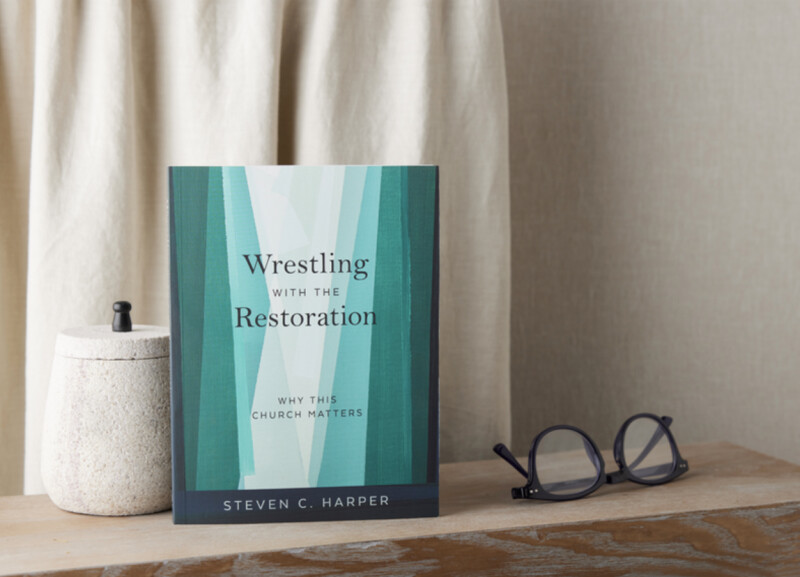Editor’s note: The following is an adapted excerpt from Steven C. Harper’s book Wrestling with the Restoration.
The psychologist Daniel Kahneman wrote the book Thinking Fast and Slow. It’s the result of a massive amount of research he and others did, showing how humans use mental shortcuts called heuristics to make decisions. That is thinking fast. It is biased.
For example, when a hundred people are asked if they are an above average driver, almost all of them answer yes. Sports analysts get paid to think fast—to offer on-the-spot explanations for why a team or a player performed the way they did: too much time off, too little time off, home court advantage, being unified against a hostile crowd.
Thinking fast creates the sense that we know things that we really do not know. We often think we are reaching rational conclusions when we are actually relying on heuristics for explanations that satisfy us.
But these stories we tell ourselves would not survive scrutiny because they are not knowledge. They are illusions of knowledge.
Thinking fast is effortless. It is easier on our brains than thinking slowly. Experts think too fast sometimes. People who are not experts think too fast when they assume that whatever an expert or Internet source says is true.
Thinking fast may be benign for sports fans. But it is unwise and potentially devastating to think fast about ultimate things, about truth—about God, Christ, the restored gospel, Church history, prophets. So if, like Joseph Smith, you are a person who considers it vital to be right “in matters that involve eternal consequences,” then thinking slowly is for you.
What It Means to Think Slowly
Thinking slowly requires effort. It demands sustained attention and concentration. But it is deeply rewarding and—with enough practice—it can become habitual.
My students and I practice the hard work of slowing down when we think about ultimate things. When combined with faith in Jesus Christ, a sincere heart, and real intent, thinking slowly contributes to resilient, mature faith, hope, and charity that resist and repel assaults and attacks. Thinking slowly begins by thinking about what and how we think, or metacognition. When we analyze our thoughts, we are metacognitive.
I ask my students what they know and how they know it, and we read together from the earliest source documents of the Restoration because source awareness is part of thinking slowly—or metacognitively—about what we know and how we know it. What are the sources of our knowledge? How do they know what they say they know? Seeking answers to source-related questions is called source criticism.
The Recipe for Knowing Truth
We start off each semester practicing source criticism with Joseph Smith’s 1832 history. It is six pages, mostly in his handwriting. What we know about the Restoration and how we know it is bound up in this document and others like it.
We think about them slowly while seeking to know in what ways they are reliable sources of knowledge and in what ways they are not. That requires knowing all that can be known about who created them and when and why and how.
Moroni’s well-known method for knowing ultimate things teaches us to combine slow thinking source criticism with faithful yearning. There are six ingredients in Moroni’s recipe for knowing. Notice how the first three teach us to think slowly:
Behold, I would exhort you that when ye shall read these things, if it be wisdom in God that ye should read them, that ye would remember how merciful the Lord hath been unto the children of men, from the creation of Adam even down until the time that ye shall receive these things, and ponder it in your hearts. (Moroni 10:3; emphasis added)
Then notice what happens when we add three ingredients of spiritual work to the brain work:
And when ye shall receive these things, I would exhort you that ye would ask God, the Eternal Father, in the name of Christ, if these things are not true; and if ye shall ask with a sincere heart, with real intent, having faith in Christ, he will manifest the truth of it unto you, by the power of the Holy Ghost. And by the power of the Holy Ghost ye may know the truth of all things. (Moroni 10:4–5; emphasis added)
This is a highly contingent promise, especially the if/then clause preceding the spiritual work: if we ask with a sincere heart, real intent, and faith in Christ, then He will reveal the truth to us by the Holy Ghost. It all hangs on our willingness to follow the recipe of using mind and spirit together.
Think slowly about who knows (and how) whether this recipe works or not. People who do not know from their own experience that this recipe works may assume that others also do not know by the power of the Holy Ghost, but they do not know that. Who knows better whether it is possible to make a soufflé—a chef who has made many, or someone who has not, and who does not believe it can be done, who does not really intend to make a soufflé, or who only makes insincere efforts?
Reason and the Restoration
I have met and read about many people who lost faith in the Restoration after feeling disillusioned. I understand that choice. A metacognitive person realizes, however, that they and everyone else choose to exercise faith in something.
Everyone exercises faith in things they cannot see and do not know in the same sense that they know with their senses. Atheists do not know there is no God. Rather, they choose to believe without proof that verifiable facts are best interpreted to mean that there is no God.
Studies indicate that about half of the scientists in America believe in some sort of deity or higher power. That remained steady for more than a century. That verifiable fact can be interpreted to mean that science reveals some kinds of knowledge, but not whether God exists. Starting from the same set of scientific facts, about half of the scientists put faith in the idea that there is no God while the other half put faith in the idea that there is.1
We sometimes want to cope with the uncertainties of life with the cognitive illusion that we choose reason instead of faith. But everyone chooses to have faith in something, including in reason.
Thinking Slowly and Exercising Faith
The Restoration declares that the sure place to put one’s faith is in Jesus Christ. Many, many people who have done that testify that their faith has been surely placed.
I testify from repeated personal experience that the Restoration’s recipe works. When we combine the brain work of thinking slowly with the spiritual work of exercising faith in Jesus Christ, having a sincere heart and real intent, and asking God to reveal to us, we can know the truth about “matters that involve eternal consequences.”
When that happens, we may know less than we thought we did before. But we know what Joseph knew the way Joseph knew.
So think slowly and do spiritual work. Then you will know how you know what you know.
Note
1. For a great example, see Jamie L. Jensen, “Faith and Science: Symbiotic Pathways to Truth,” Brigham Young University Devotional, November 3, 2020, https://speeches.byu.edu/talks/jamie-jensen/faith-science-symbiotic-pathways-truth/.
More articles for you:
▶ Must-read perspective on what it means to say you ‘know’ the Church is true
▶ ‘I don’t have a testimony of this’: How a ward responded to teacher’s humble admission
▶ What does it mean to say ‘I know’ vs. ‘I believe’? An insightful, comforting answer



